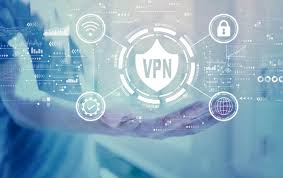
In a connected world, your data is more vulnerable than ever. In this age, protect your personal data in every digital action, whether through social media, mobile apps, online shopping, or banking, leaves a trace.
Unfortunately, cybercrime is constantly looking for fresh approaches to exploit these online digital trails.
The good news, though, is that you do not need to be a technology master to protect your personal information from hacker access.
By following a few basic and straightforward steps, you may take control of your digital security and reduce the possibility of being a victim of cybercrime.
This course will lead you through some simple and useful techniques you can start applying straight away to guard your private data from dangerous online threats.
Why Should You Want to Protect Your Personal Data Against Hacker Access?
This includes everything from your credit card details, passwords, and medical records to your name and email address.
Your personal records include everything.
The effects can be rather negative when hackers get hold of this data, including identity theft, bank account depletion, credit score damage, and even blackmail.
Thousands of people unintentionally provide their data to cybercriminals every day by clicking on networks that are not safe, using passwords that are too easy to figure out, or falling prey to phishing tactics.
This is the reason it is rather imperative to follow sensible digital habits in order to protect your personal information from being compromised.
Step 1: Apply Unusual and Safe Passwords
Why should one have a strong password?
Hackers can easily access your accounts by guessing reused or simple passwords.
If you use the same password on several platforms, it’s like using the same key for every door in your life; should someone find it, everything will be accessible. This may help in protect your personal data.
Tips for designing stronger passwords
- Kindly use a minimum of twelve characters.
- Included should be uppercase and lowercase letters as well as numbers and special characters such!, @, and #.
- Steer clear of overly obvious phrases like “password123” or your birthdate.
See a password manager and
LastPass, 1Password, and Bitwise can help you create and save complex passwords, therefore relieving you of the need to remember every one of them.
With just one master password, the encrypted login data you enter into a password manager provides safe access to all of your accounts.
Step 2: Should Be Turned On Two-Factor Authentication (2FA)

Using two-factor authentication will provide still another layer of security to your online profiles.
Although they are successful in obtaining your password, a hacker cannot access your account without first finishing the second verification process. This may help in protect your personal data.
Common two-factor authentication models:
- Text message codes sent to your phone
- Authentication methods such Google Authenticator or Authy
- Biometric scans in the form of fingerprints or face recognition technologies
Which accounts call for two-factor authentication?
Activate two-factor authentication for every main account, especially:
- Bank and financial services
- Electronic mail
- Cloud storage—including Google Drive, Dropbox, and others
- Social networking sites
Step 3: Avoid Public Wi-Fi Systems or Use a VPN (Virtual Private Network)

The perils of using public Wi-Fi networks
Despite its apparent convenience, free public Wi-Fi in places like cafes, airports, or hotels is actually a valuable resource for hackers.
These networks are often poorly secured; therefore, hostile actors could be able to pilfer personal data like credit card details, emails, and passwords. This may help in protect your personal data.
Describe a virtual private network (VPN)
By encrypting your internet connection, a Virtual Private Network—also known as a VPN—opens a safe path for your data.
Though you are linked to public networks, your IP address is hidden and your personal data is hidden from hackers.
Recommendable VPNs:
- Express VPN
- ProtonVPN
- Norway Virtual Private Network (NordVPN)
Anytime you access private information on a network you do not trust, use a VPN. This may help in protect your personal data.
Step 4: Make Sure Every Tool and Program You Own Is Always Current
The need of change
Software updates sometimes feature significant security patches meant to fix vulnerabilities hackers might find use for.
If you wait to install updates, your gadget can become a target for attacks. This may help in protect your personal data.
What ought to be routinely updated?
Some instances of software are shown here:
- Operating systems including Windows, macOS, Android, and iOS
- Web browsers (Chrome, Firefox, and Safari)
- Apps
- Antivirus software
- Plugins and extensions
Starting the automated update function
Turn on automatic updates whenever possible to ensure you always have the most recent security fixes.
Step 5: Watch Out for Phishing Scams
Phishing is a type of fraud whereby fraudsters pretend to be trustworthy companies—like your bank or a well-known brand—to into revealing sensitive data. This may help in protect your personal data.
What knowledge can help you detect a spot?
- Emails or messages including wording deemed as urgent (“Your account will be closed!”)
- Unusual sender addresses or domain names, suspicious links or attachments, and requests for personal or financial information should all be carefully considered.
It’s best done this way:
- Never click on sites you know nothing about.
- Verify the sender’s email address to be sure they are reputable
- Avoid downloading expectedly unneeded attachments
- If you have any uncertainties, please reach out to the business directly through official channels.
Step 6: Safeguard Your Mobile Device
Smartphones include a lot of personal data, including texts, emails, pictures, and access to all of your apps.
Losing or stealing it could result in significant damage. This may help in protect your personal data.
Safeguarding your cell phone:
- Use a biometric lock, a password, or a PIN (personal identification number).
- Find My iPhone and Android Device Manager will let you additionally activate remote wipe capabilities
- Install only programs from official stores—Google Play, Apple App Store
- Steer clear of rooting or jailbreaking your gadget
- Make sure your running system and applications are continually current
Step 7: Make Sure Your Data Is Routinely Backed Up

Backups will protect you from irreversibly losing data should ransomware attack or encrypt your device.
Still, backups won’t stop hacking from happening. This may help in protect your personal data.
The best backup techniques are:
- Automate backups weekly or monthly
- Encrypt backup data for more protection
- Use both cloud and offline (external hard drive) backups
Among the most often utilized choices now available are backup programs such:
- Google Drive
- Dropbox
- iCloud
- Backblaze
Step 8: Control the Online Content You Share
Too much sharing drives identity theft
Hackers often combine personal data from social networking sites, including your birthdate, pet name, or house address, to guess passwords or answer security questions. This may help in protect your personal data.
Advice on reducing the effect of exposure:
- Make sure your social media accounts show private mode
- Share nothing personal, including your phone number or complete address
- Give some serious thought to taking part in online tests requiring personal information provision
- Turn down friend invites from folks you don’t know
Step 9: Watch Every One of Your Tools and Accounts
To spot possibly suspect behavior early on and to act quickly, one really needs to be vigilant. This may help in protect your personal data.
One should be observing:
- Notes from your credit card provider and bank regarding charges unknown to you
- Emails aiming at security warnings or attempts at login
- Data from your firewall’s password logs and antivirus program
Consider setting in place:
- Programs for tracking identity theft such as Credit Karma, Aura, or LifeLock
- Email and social media platforms have login alerts
Your chances of reducing the damage are much raised as soon as you learn about a possible risk.
Step 10: Educate Yourself and Keep Informed About Present Events
Cybersecurity threats are always evolving and forward-moving.
Your ability to protect your data from hackers depends on how much information you have. This may help in protect your personal data.
One can keep current in easy ways:
- Track cybersecurity blogs including Threatpost and Krebs on Security
- Get alerts from your antivirus company
- Join free webinars or workshops
- Consult security guidelines particular to your platform, including those offered by Microsoft, Apple, and Google
Your most useful weapon for fighting cybercrime is knowledge. This may help in protect your personal data.
At Last, Some Considerations: You Should Finish Things Before It’s Too Late
Cybersecurity is a dilemma that affects both our daily lives and our technology.
Why would you consider your digital data to be less important than not leaving your house unlocked or handing your credit card to a stranger?
Following the actions detailed on this blog is not difficult.
In practical terms, these actions are effortless to implement.
Creating strong passwords, enabling two-factor authentication, avoiding public Wi-Fi networks that lack security, and keeping and updating your software will help you significantly guard your personal data from being accessed by hackers. This may help in protect your personal data.
You shouldn’t wait until you have already been a victim before you start giving your digital security top attention.
You should start right away following these simple yet effective steps since the protection of your personal data is crucial. This may help in protect your personal data.
Are you interested in learning about “14 Simple Ways to Stay Healthy Without Joining a Gym“?

